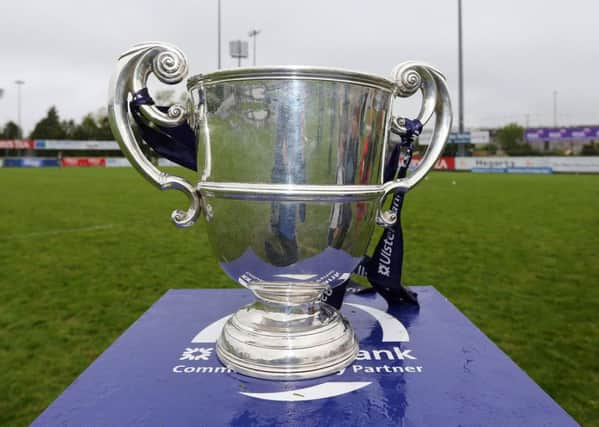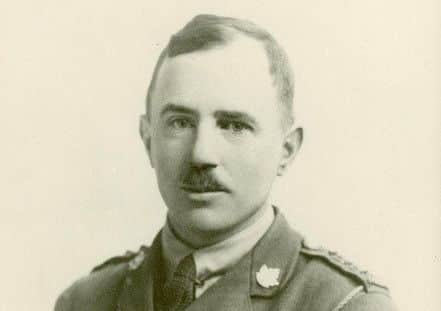RUGBY: The history of the All Ireland Bateman Cup


On Saturday afternoon Galwegians will play current holders Cork Con in the Ulster Bank backed Bateman Cup final. Cork Con also face Clontarf in the Ulster Bank Division 1A final on Sunday 8th May at Dublin’s Aviva Stadium.
We delve back to the archives and look at how Ulster Clubs have fared in the competition over the years and how the revered cup was established.
Advertisement
Hide AdAdvertisement
Hide AdWhilst it was first introduced in the 1921/22 playing season the Bateman Cup has only been contested 21 times as it lapsed following the outbreak of the Second World War, was revived for a one –off IRFU centenary match in 1974/75 before being re-instated during the 2005/06 season. In the past decade it has become a popular and prestigious competition in the Irish rugby calendar.


Its origins go back to the First World War and to Trinity College maths and law graduate and afterwards a schools inspector, Dr Godfrey Bateman from Listowel in Co Kerry. He had his wife Frances had seven children including six boys two of whom – Reginald and Arthur fought and died in the Great War in 1918.
Teacher and soldier
Born in 1883 in Listowel, Major Reginald Bateman secured a BA from Trinity College in 1906 and was appointed a Professor of English at the University of Saskatchewan – one of the first professors recruited by the then new Canadian university. He enlisted as a private in the 28th Infantry Battalion in October 2014 and on completing his training spent six months in and around Ypres in Belgium before taking his officer’s exams in June 1916 back in Canada in Winnipeg.
Whilst back in Canada he described trench life as ‘days of unendurable monotony and moments of indescribable fear.’ Reginald was promoted to the rank of Major and took charge of the Saskatchewan Company of the 196th Infantry Battalion. It was subsequently broken up in England and Reginald reverted to Lieutenant and was posted back to France in 1917 serving with the 46th Canadian Infantry Battalion.


Advertisement
Hide AdAdvertisement
Hide AdHe was wounded in 1917 at Aconite Beach but then returned to action as a Captain when he was killed by shell fire aged only 34 on 3rd September 1918 near Dury. Reginald was “considered one of the most popular officers in the 46th” was mentioned in dispatches and is commemorated in the Vimy memorial at Pas de Calais.
His legacy includes a Professorship of English which was created in 1919 and still exists at the University of Saskatchewan and a 1932 Bateman Memorial Fund which provided scholarships to students.
Doctor and Captain
Captain Arthur Bateman was born in Baileborough, Co Cavan in 1890 and like all five of his brothers graduated from Trinity College. It was whilst he was a medical student in Dublin that he played both rugby and cricket for Trinity and gained two international caps in cricket playing against Scotland before the onset of World War One.
Arthur was commissioned as a Lieutenant in the Royal Army Medical Corps in August 1914 and was promoted to Captain in 1915 serving in France with the 7th Cameron Highlanders. He was awarded the Military Cross for attending to the many wounded and dying soldiers at the front line during battle close to Ypres in July 1917 where he displayed ‘conspicuous gallantry and devotion to duty - and the upmost disregard of danger.’
Advertisement
Hide AdAdvertisement
Hide AdAged 27 in March 1918 Captain Bateman was wounded,declared missing and presumed dead. Like many other soldiers who fell at the front lines his body was never found and there was no official grave. The War Office quoted his Colonel as follows: ‘Captain Bateman manfully stuck to his post until the Germans were within a few years of him, when he started to retire along with his orderlies. Unfortunately he was hit and fell into the hands of the enemy.’ He is commemorated in the Pozieres Memorial at Somme.
Trophy Inscription
In tribute to the bravery and dedication of these two sons Dr Godfrey Bateman decided to donate a new trophy to the IRFU in 1922 inspired by his sons’ love of rugby. The heartfelt inscription that the cup bears sums up his feelings of loss.
Presented by Godfrey Bateman to the Irish Rugby Football Union in ever-fresh and loving memory of his darling sons:
Major Reginald John Godfrey Bateman, Canadian Infantry, killed in action 3 September 1918,
Advertisement
Hide AdAdvertisement
Hide AdCaptain Arthur Cyril Bateman, who on 28 March 1918 gave his life for his wounded Camerons.
Ulster Success
The first final took place in 1922 between Lansdowne and Cork Constitution and was played at Lansdowne Road on 29 April with the Dublin team taking the honours. According to the Irish Times the competition annually involved the four provincial cup winners but at the inaugural event Ulster cup winners Instonians withdrew and the Connacht winners didn’t take part.
Ulster teams however have achieved great success at the tournament with Queens University taking the top spot winning the trophy three times in 1924, 1932 and 1937. North of Ireland won in 1935, Instonians in 1927 and Ballynahinch in 2009. Other Ulster teams have been runners-up –Belfast Harlequins (2007) Dungannon (2011) and Ballymena (2012).
This year’s Bateman Cup final will take place at Crowley Park, Galway as Galway won the ‘home’ venue by the toss of a coin.
Source for information The Bateman Cup by Prof Peter Clarke of University College Dublin.